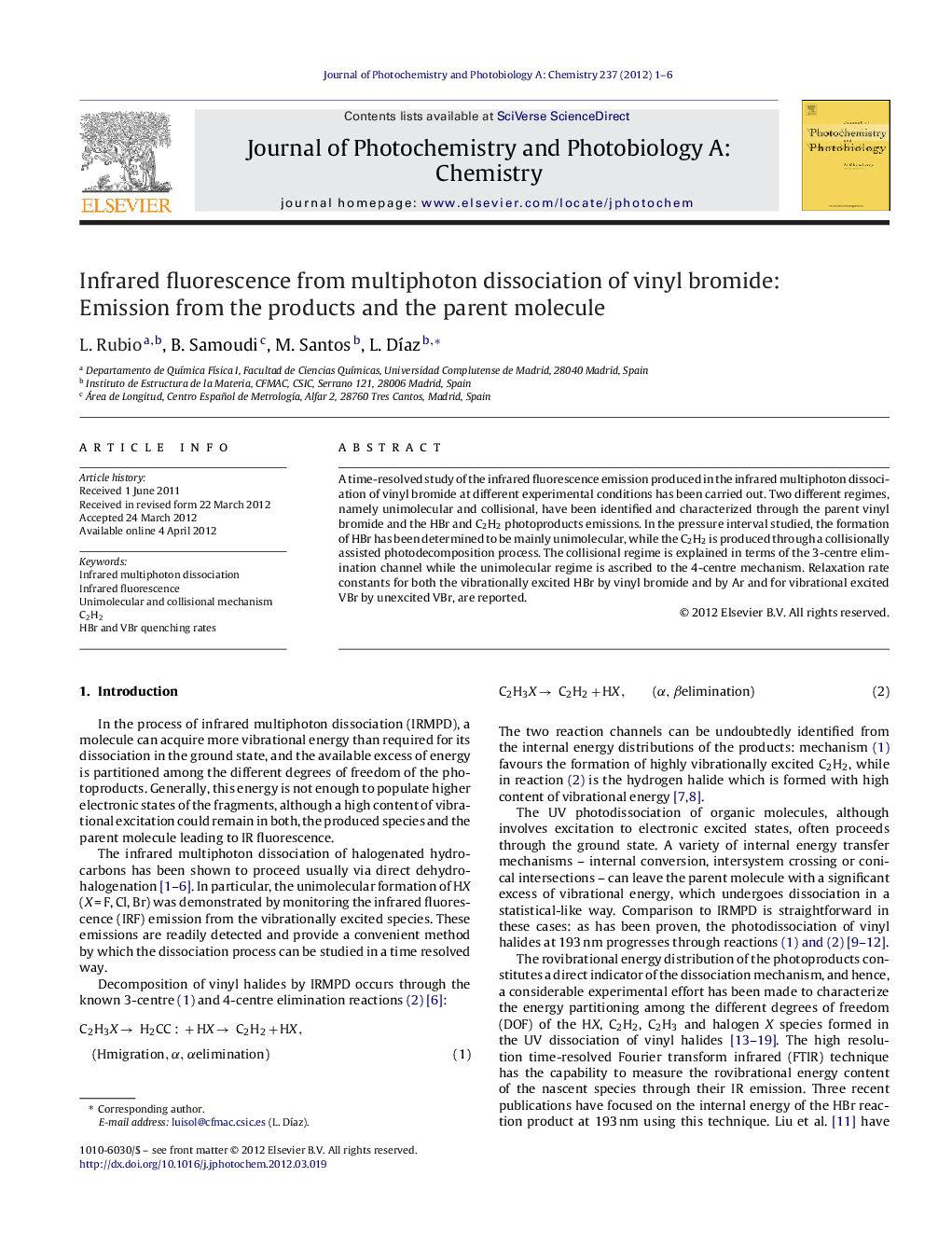| Article ID | Journal | Published Year | Pages | File Type |
|---|---|---|---|---|
| 28307 | Journal of Photochemistry and Photobiology A: Chemistry | 2012 | 6 Pages |
A time-resolved study of the infrared fluorescence emission produced in the infrared multiphoton dissociation of vinyl bromide at different experimental conditions has been carried out. Two different regimes, namely unimolecular and collisional, have been identified and characterized through the parent vinyl bromide and the HBr and C2H2 photoproducts emissions. In the pressure interval studied, the formation of HBr has been determined to be mainly unimolecular, while the C2H2 is produced through a collisionally assisted photodecomposition process. The collisional regime is explained in terms of the 3-centre elimination channel while the unimolecular regime is ascribed to the 4-centre mechanism. Relaxation rate constants for both the vibrationally excited HBr by vinyl bromide and by Ar and for vibrational excited VBr by unexcited VBr, are reported.
► Time-resolved study of the infrared fluorescence emission in the IRMPD of VBr. ► Collisional and unimolecular regimes take place trough 3 and 4 centre mechanism. ► Collisional re-excitation of excited VBr prevails in the formation of C2H2. ► Relaxation rate constants for vibrational excited VBr† and HBr† have been obtained.
